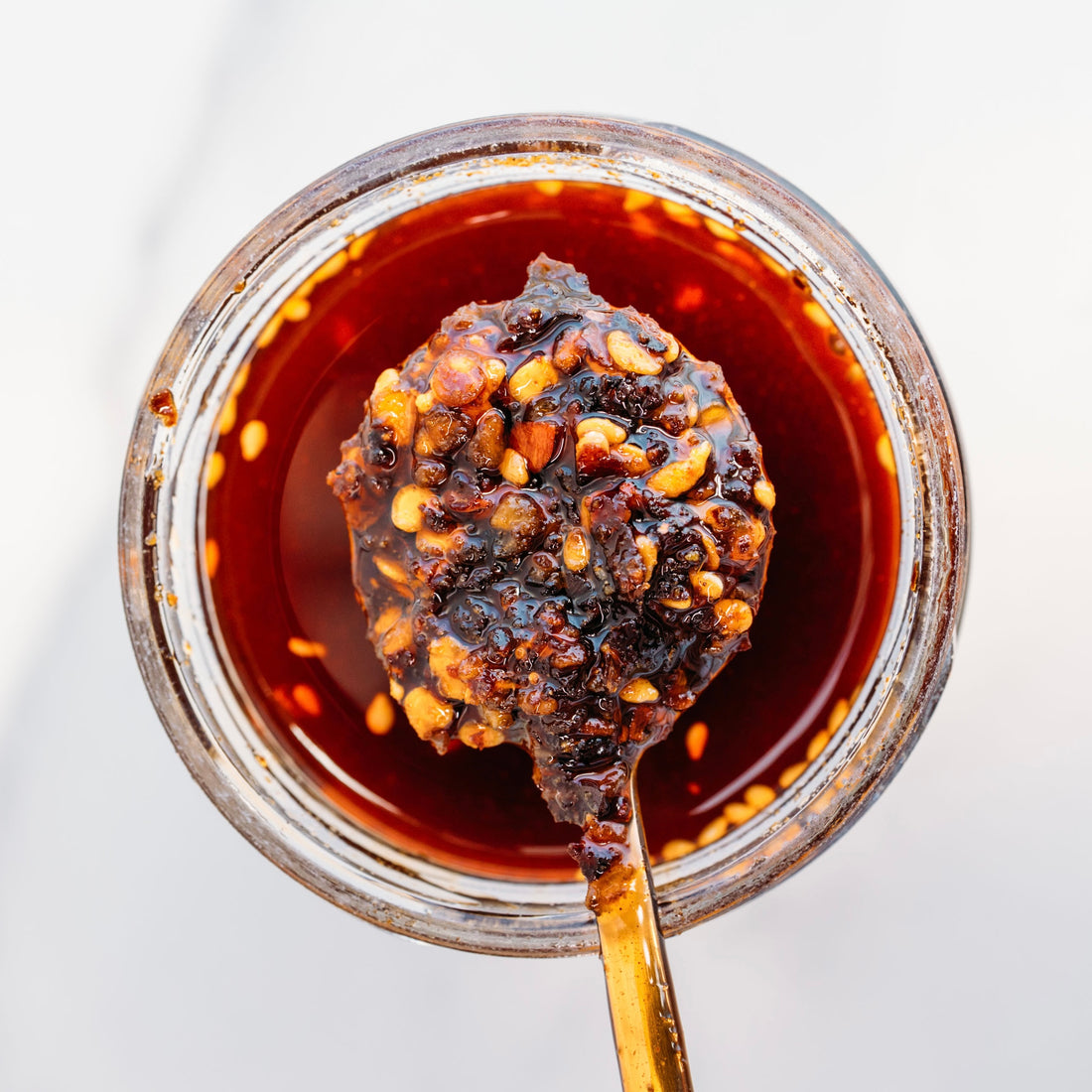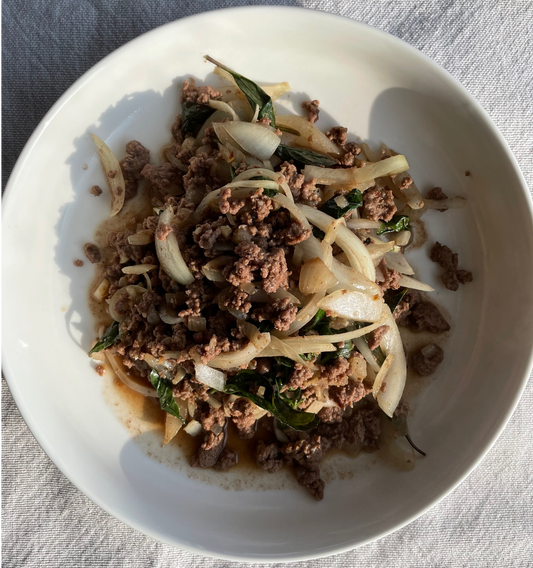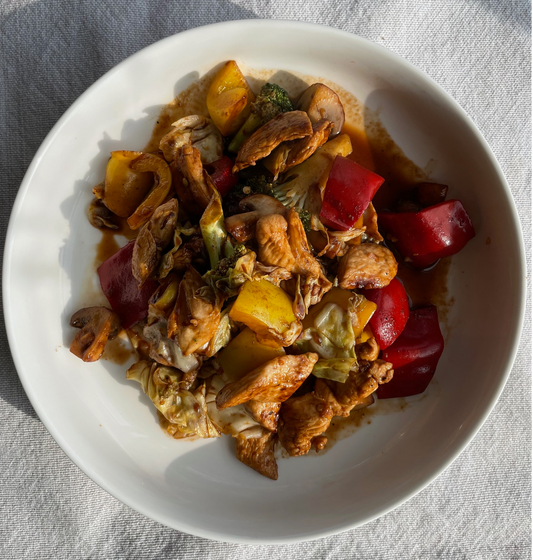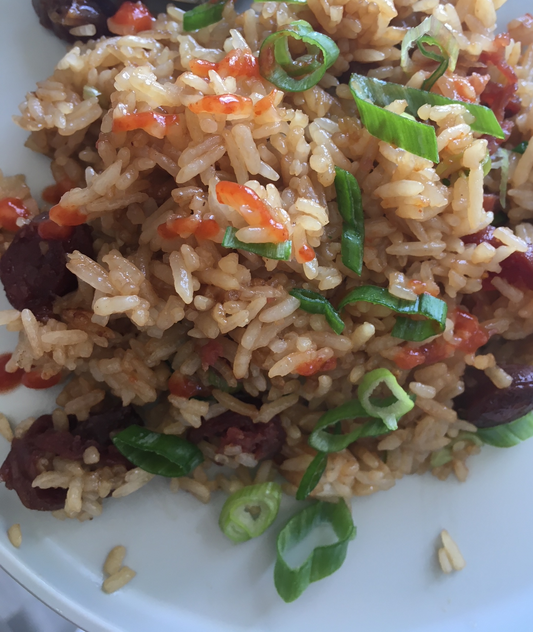There are very few sauces that all Asians feel equally and consistently as passionate about as chili oil. It’s our version of to-go tabasco — not a plastic takeout bag or designated errands tote found without some version of the good-on-everything sauce. Renowned for its versatility, there’s no shortage of creative and innovative ways to get your daily dose of chili oil — it’s just as undeniably good cooked in a dish as it is atop avocado toasts, dim sums, and even ice cream.
THE HISTORY OF CHILI OIL
Chili oil is an essential pantry staple of Chinese cooking, its importance often stated in the same breath as soy sauce or rice vinegar. Made from vegetable oil infused with various peppers and hot oils, chili oil works brilliantly as a source of spice in cooked dishes as well as a dipping condiment amongst your table spread.
The origins of Chinese chili oil date back to the Ming Dynasty, when chili was first brought over from Latin America. At first, the concept of soaking hot chilis in neutral oils was used for mere function — the most efficient way to preserve out-of-season chilis. As with all great inventions, people got curious — tasting their own jarred creations just to realize they were absolutely delicious atop dumplings, noodles, vegetables, and practically anything else.
Chili oil has many names across regions and cultures who regard it as a kitchen mainstay. In Chinese, it’s là jiāo yóu (or chili pepper oil) — but travel to different regions like Sichuan (hóng yóu) or Shaanxi (yóu pō là zǐ) and you’ll likely encounter translations and recipe variations that complement local palates. Technique varies too: Some food regions exclusively use chili oil as a condiment — Cantonese chefs prefer to embrace the fresh and light flavors of natural ingredients, using chili oil as an accompaniment rather than the centerpiece. Others, like Sichuan where local spice varieties literally translate to “numbingly hot,” entire dishes are doused in chili oil.
It’s chooser’s choice, really — which explains chili oil’s widespread popularity even beyond Asian cuisines. Its versatility and dexterity as a cooking and eating companion appeals to every intersection of food lovers — from amateur home cooks and takeout pros to Michelin chefs.
THE FOODS BEHIND THE FLAVOR
There exists an infinite number of ways to make chili oil, depending on your spice level, ingredient, and flavor preferences — but the base ingredients almost always stay the same. Variations in taste can largely be attributed to the preparation time, ingredient quality, and specific peppers and chilis used.
Chili
Arguably the most important ingredient, sourcing quality chili flakes is essential to ensuring the freshness and multidimensional flavor of your chili oil. Good chili flakes are bright, even in color and size — and come in a range of heat levels. Western Chinese chilis are considered go-tos because of their sharp and strong heat signatures, but many Southeast and South Asian regions produce incredible versions too.
The chilis you use tend to determine the spiciness of your final sauce — we use Korean gochugaru flakes in our Chili Crisp for its well-rounded and slightly subtler heat so you can adjust the spice level to your desire.
Oil
Good chili oils require a neutral cooking oil with a high smoking point to serve as the base of the recipe. Sunflower, vegetable, canola, rapeseed, corn, and avocado are all excellent and easy-to-find options — though avoid olive oil or any variations with strong natural tastes and aversion to high heat. Our Chili Crisp is based with sunflower oil for its low-fat, high-nutrient nature and slightest hint of nuttiness.
Spices & Aromatics
If chilis and oils make up the foundational flavors of the final sauce, spices and aromatics turn it into a full-on tastebud experience. Infusions of garlic, onion, peppercorns, seeds, and herbs create the kind of blended umami flavor that leaves your tastebuds craving more. We’re particularly obsessed with the sesame seeds in Bowlcut’s Chili Crisp — the nutty and semisweet notes unfold right as you’re experiencing peak heat, so you’re left with a bright and satisfying (but not unbearably spicy) taste.
3 WAYS TO USE BOWLCUT CHILI CRISP:
Prosciutto and cantalope toast by Bon Appetit





